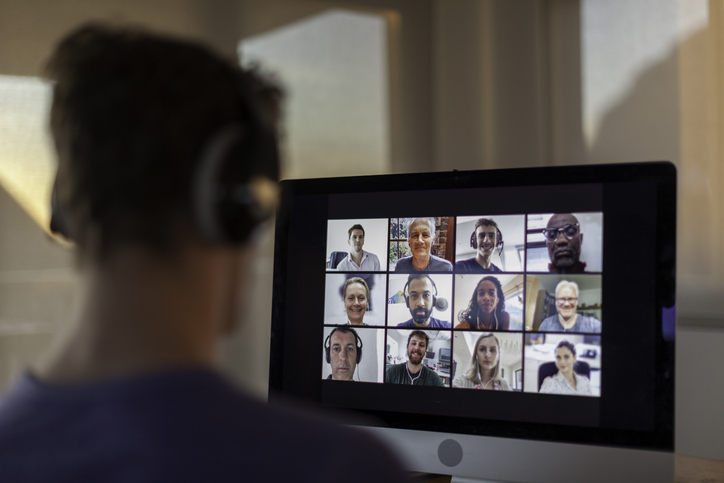
Developing a nonprofit community engagement strategy
“Nonprofit community engagement” is a fancy way of saying connection — why employees, volunteers, donors, beneficiaries and more, care about your organisation and its work, and the sense of ownership they feel in the results.
Charity and nonprofit board members like you are ideally suited to leading these engagement efforts. You’re the face of your organisation to internal and external audiences. You are stewards of its work, providing critical oversight to ensure the board’s and the organisation’s activities remain relevant, resourceful and responsive. And the wide-ranging skills, experiences and networks you bring to your role are tailor-made for building community ties.
With all of this in mind, here’s a brief primer — starting with a definition of what developing a nonprofit community engagement strategy looks like.
Developing a nonprofit community engagement strategy
Developing a nonprofit community engagement strategy involves creating a structured approach to foster meaningful relationships and active participation among community members, volunteers, and stakeholders. This strategy should be rooted in a deep understanding of the community’s needs, aspirations, and cultural contexts.
Key components of an engagement strategy include
- Clear communication channels
- Inclusive events
- Collaborative partnerships
- Opportunities for community members to contribute and voice their opinions.
By leveraging digital tools and social media, alongside traditional outreach methods, nonprofits can enhance their visibility and accessibility. Ultimately, a successful community engagement strategy builds trust, drives volunteerism and amplifies the charity or nonprofit’s mission, leading to sustained community support and impactful outcomes.
Examples of nonprofit community engagement
Because nonprofit community engagement is a wide-ranging topic, with many facets, here are several examples.
When your organisation hosts a table or booth at a local fair, handing out literature and talking to attendees about your mission, that’s community engagement for nonprofits.
When one of your board members shows up to a community event or leads a town hall, that’s nonprofit community engagement, demonstrating that your organisation values feedback, ideas and meaningful interactions.
And when your organisation joins forces with a like-minded business or group in the community — for a fun run or restaurant week fundraiser, for example — this is nonprofit community engagement, as well.
Why is nonprofit community engagement so important?
Community engagement is the lifeblood of your organisation. Without a community to serve, your nonprofit wouldn’t have a mission. Without a network of volunteers and donors, your organisation wouldn’t have a support system. The more engaged people are with your organisation, particularly repeat donors, the more likely they are to open their wallets and support you financially.
But these contributions are only part of the story. Nonprofit community engagement is deeply connected to relevance.
“[DEI outreach and development] helps build meaningful relationships with stakeholders. By actively involving community members in decision-making processes, organizations can ensure that their purpose-driven activities align with the aspirations and needs of the people they serve.” – Gwen K. Young, Chief Executive Officer, Women Business Collaborative
For charities and nonprofits, community engagement is vital to accountability. More and more, people expect to know where a nonprofit gets its funds and how it allocates its resources, develops its programs and measures success, along with the decision-making behind it all. Critically, nonprofit community engagement is a priority for boards today because these activities build trust. By forging relationships with the people who are affected by your work, you demonstrate that you value and respect them. By listening and learning from them, you’re demonstrating that their input matters. For volunteer boards, the right technology is critical for making nonprofit community engagement easier and more effective. Download our guide to find out why.
____________________________________________________________________________
What are the 3 elements of community engagement?
The Nonprofit Marketing Guide defines community engagement as awareness, interaction and participation.
Awareness ranges from talking to individuals one on one about your mission to social media campaigns and community events that introduce your organisation and work to hundreds, even thousands of people at once.
Interaction makes this communication a two-way street. Examples include surveys that collect feedback on your organisation’s programs or services and polls that take your community’s pulse on issues and needs.
Participation deepens the connections by turning words into action. This could involve advocating for an important community cause, partnering with complementary groups on mutually beneficial events and campaigns or bringing donors and beneficiaries onto planning committees or even the board itself to help guide your efforts.
Examples in action: 8 types of nonprofit community engagement
As a board member, you lead the way for defining goals and objectives, overseeing strategy and keeping nonprofit community engagement efforts on track.
So, here are a few tactics to consider to build awareness of your work, increase interaction with supporters and beneficiaries and make participation a two-way street:
- Hosting a booth or activity at a local festival
- Participating in community events
- Partnering with local community groups and businesses who have complementary missions
- Conducting online surveys to gather feedback on services, operations and needs
- Holding focus groups and town halls for more in-depth discussions
- Convening an advisory board for ongoing input
- Bringing in members to co-design elements of programs and services
- Hosting workshops, seminars and training activities
How board management software can help
If you’re thinking that all of this sounds like a lot of work, adding more items to an already-packed board agenda, you’re not wrong.
Fortunately, specialized technology and tools are ready to help with your nonprofit community engagement strategy: board management software.
The right solution:
- Enhances and accelerates collaboration with secure workrooms and discussion forums board members can use anytime and anywhere
- Reduces the potential of information overload with a searchable, centralised library for surveys, reports, market intelligence and more
- Strengthens efforts to keep implementation on track with secure online file-sharing for collaboration, task schedulers for assigning next steps and milestones and prompts you can add to agenda items to track progress
BoardEffect: Technology ready to help you build community ties
BoardEffect was designed with the needs of charity and nonprofit boards in mind — as you go about creating and implementing your community engagement strategy, you can leverage its features to support your efforts, from storing key documents in your central Resource Library to creating secure, dedicated workrooms for board or committee members to collaborate together.
See for yourself. Schedule a demo today to experience how BoardEffect can enhance your community engagement.








